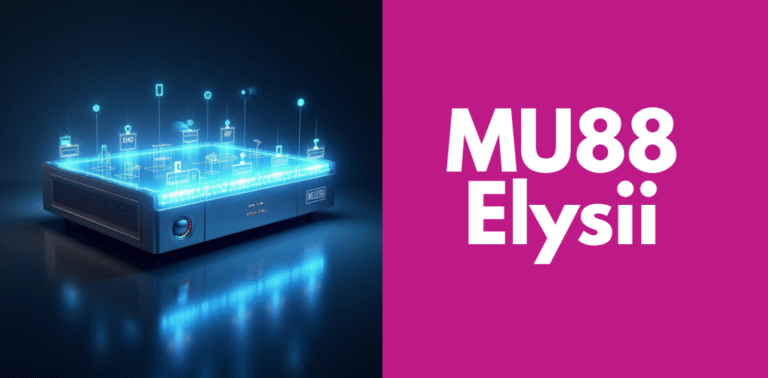To Know About Wurduxalgoilds: A Comprehensive Insight into Their Functions, Impact, and Future
In an era defined by rapid technological evolution, understanding emerging systems is crucial. One such concept gaining traction across multiple industries is wurduxalgoilds. For many, learning to know about wurduxalgoilds opens doors to a new understanding of how automation, data intelligence, and adaptive systems can function harmoniously to solve modern challenges.
Whether in finance, health, logistics, or environmental sciences, wurduxalgoilds are becoming the centerpiece of next-generation decision-making tools.
These dynamic systems go far beyond traditional automation. Unlike fixed algorithms that follow rigid rules, wurduxalgoilds represent an adaptive, learning-based model. Their rise is a reflection of society’s shift toward intelligent systems that not only respond to changes but anticipate them.
Origins and Evolution
The concept of wurduxalgoilds did not emerge overnight. It has roots in earlier developments in artificial intelligence and algorithmic learning. During the early 2010s, software engineers began experimenting with recursive algorithms capable of modifying their own code based on changing conditions. These early systems laid the groundwork for what we now refer to as wurduxalgoilds.
Originally applied within financial markets for high-frequency trading, the foundational logic of wurduxalgoilds quickly gained popularity among data scientists for its versatility. Over time, more advanced models began integrating machine learning, quantum-inspired logic, and fractal storage patterns—ushering in a new wave of intelligent automation systems.
By the late 2020s, wurduxalgoilds had evolved into an independent class of adaptive digital frameworks, capable of functioning across disciplines—from disease prediction in healthcare to routing optimization in logistics.
Core Components of Wurduxalgoild Architecture
To understand what makes wurduxalgoilds so powerful, it’s essential to break down their internal structure. These systems are composed of several interconnected technologies:
- Adaptive Algorithms: These are the core logic systems that evolve in real-time based on input data.
- Recursive Pattern-Recognition Matrices: By analyzing patterns continuously, these matrices enhance prediction accuracy.
- Quantum-Inspired Logic Gates: Designed to perform parallel evaluations, they mimic the behavior of quantum states without requiring quantum hardware.
- Self-Modifying Code Structures: A unique characteristic that allows the system to improve itself over time without human intervention.
- Fractal Data Organization: Data storage and retrieval use scalable fractal-based methods for managing complex datasets efficiently.
Each of these components works together to allow wurduxalgoilds to handle large-scale tasks while adapting to new information with minimal lag or error.
What Makes Them Special
One of the most compelling reasons to know about wurduxalgoilds is the unique set of advantages they offer. These systems are not just about efficiency; they introduce an entirely new layer of intelligence and responsiveness.
Here’s a comparative table illustrating what sets wurduxalgoilds apart:
| Feature | Explanation |
|---|---|
| Real-Time Learning | Adapts to incoming data without needing manual reprogramming. |
| Contextual Awareness | Can understand not just data but the surrounding environment of decisions. |
| Scalable Intelligence | Suitable for small operations or enterprise-scale deployments. |
| Self-Evolving Logic | Continuously refines its own rules and patterns. |
| Multi-Channel Adaptability | Functions across various input streams, from text to sensor data. |
These qualities make wurduxalgoilds especially valuable in unpredictable or complex scenarios.
Industry Applications
If you’re beginning to know about wurduxalgoilds, it’s useful to explore how they apply across different industries. Their design is inherently cross-functional, making them suitable for both high-frequency tasks and deep analysis.
Finance is where wurduxalgoilds found their early success. Trading systems that used these adaptive algorithms were able to outperform traditional bots by learning from real-time market shifts. Risk management models also benefited by becoming more predictive and less reactive.
In healthcare, wurduxalgoilds are used to detect anomalies in patient data. This leads to quicker diagnostics, improved treatment paths, and reduced hospital readmission rates. For chronic conditions, adaptive monitoring tools using wurduxalgoilds offer personalized care strategies.
E-commerce platforms use them for dynamic pricing strategies and personalized recommendation systems. By analyzing user behavior and market trends simultaneously, these systems provide a seamless shopping experience.
Logistics and manufacturing benefit from optimized inventory management, smart routing, and predictive maintenance. The real-time adjustment capabilities of wurduxalgoilds help prevent supply chain disruptions and mechanical failures.
In environmental science, these systems assist in climate modeling and resource optimization. For example, wurduxalgoilds can analyze water flow patterns, predict droughts, or enhance renewable energy storage efficiency.
Advantages Highlighted
When exploring to know about wurduxalgoilds, it’s impossible to overlook their many strengths. Among the most significant benefits are:
- Increased Speed and Efficiency: Tasks that took hours can now be processed in minutes due to real-time learning.
- Error Reduction: By learning from mistakes, these systems reduce future errors autonomously.
- Better Decision-Making: Wurduxalgoilds offer predictive insights rather than just historical analysis.
- Resource Optimization: From bandwidth to energy, these systems minimize waste.
They also bring flexibility into workflows by adapting to both internal and external changes quickly and effectively.
Drawbacks and Concerns
Despite their impressive capabilities, wurduxalgoilds are not without flaws. In fact, knowing the potential downsides is a critical part of understanding the full picture.
One of the biggest concerns is opacity. Many wurduxalgoild systems function like a black box—delivering results without clearly explaining how they reached them. This lack of transparency raises ethical concerns in critical sectors like healthcare or law enforcement.
Another issue is the high resource consumption. These systems often require significant computational power and large volumes of data. Small organizations might find it difficult to adopt wurduxalgoilds due to infrastructure limitations.
There’s also the problem of legacy system compatibility. Integrating such advanced frameworks into outdated software stacks can be costly and complex. Finally, security vulnerabilities may arise as systems self-modify, potentially introducing unforeseen errors or exploit paths.
Ethical, Social, and Environmental Considerations
Understanding to know about wurduxalgoilds also involves addressing deeper societal questions. These systems, if not properly governed, can reflect or even amplify existing biases in the data. Imagine a healthcare wurduxalgoild trained on incomplete demographic information—it could lead to skewed or harmful decisions.
There’s also the concern of job displacement. As wurduxalgoilds take over complex roles, the demand for certain types of labor may shrink. Furthermore, their reliance on massive data centers can contribute to increased carbon footprints unless paired with green infrastructure.
Privacy is another area of caution. Adaptive systems often track user behavior at a granular level, raising concerns about data ownership and consent.
Criticisms and Cautionary Perspectives
Not everyone agrees on the positive impact of wurduxalgoilds. Critics argue that despite their advanced features, they sometimes fail in real-world conditions due to overfitting or unanticipated data conflicts. Others highlight that the complexity of these systems may make them more difficult to debug than they’re worth.
Environmental activists point to the carbon impact of training and deploying these systems at scale. In some industries, particularly healthcare, there are calls for regulation to prevent over-reliance on opaque decision-making processes.
Alternatives and Complementary Approaches
While wurduxalgoilds are powerful, they are not always the best choice. Simpler machine learning models, rule-based systems, and even human-guided logic still hold value, especially in tasks that require high transparency or minimal adaptation.
In fact, many companies choose a hybrid approach—combining the strengths of wurduxalgoilds with traditional systems to balance innovation with control. This method allows for better monitoring, easier maintenance, and more user trust.
The Road Ahead: Trends & Future Direction
The future for wurduxalgoilds looks promising. As research continues, developers aim to make these systems more transparent and energy-efficient. Open-source frameworks are being developed to allow safer testing and broader collaboration.
Expect to see wurduxalgoilds enter new fields like urban planning, climate recovery programs, and adaptive education systems. With increasing focus on interpretability, the next generation of wurduxalgoilds may even include built-in audit trails, making them safer and more accountable than ever before.
Conclusion
To truly know about wurduxalgoilds, one must see them not just as another technological buzzword but as a fundamental shift in how systems learn, adapt, and make decisions. Their capacity to evolve, process, and predict sets them apart in the digital age. However, like any tool, their impact depends on how we use them. Balancing power with responsibility, and innovation with ethics, will define their legacy in the years to come.
Additional Posts
KZ43X9NNJM65 – The Digital Code Powering Modern Tech Systems
DL3654-6-10 Compatible Alternators: Complete Guide for Vehicle Owners
Understanding Source Address 5910d068: A Complete Guide to Hexadecimal IP Decoding and Networking
Discover MU88 Elysii: The Future of Multimedia, Gaming and Digital Innovation






